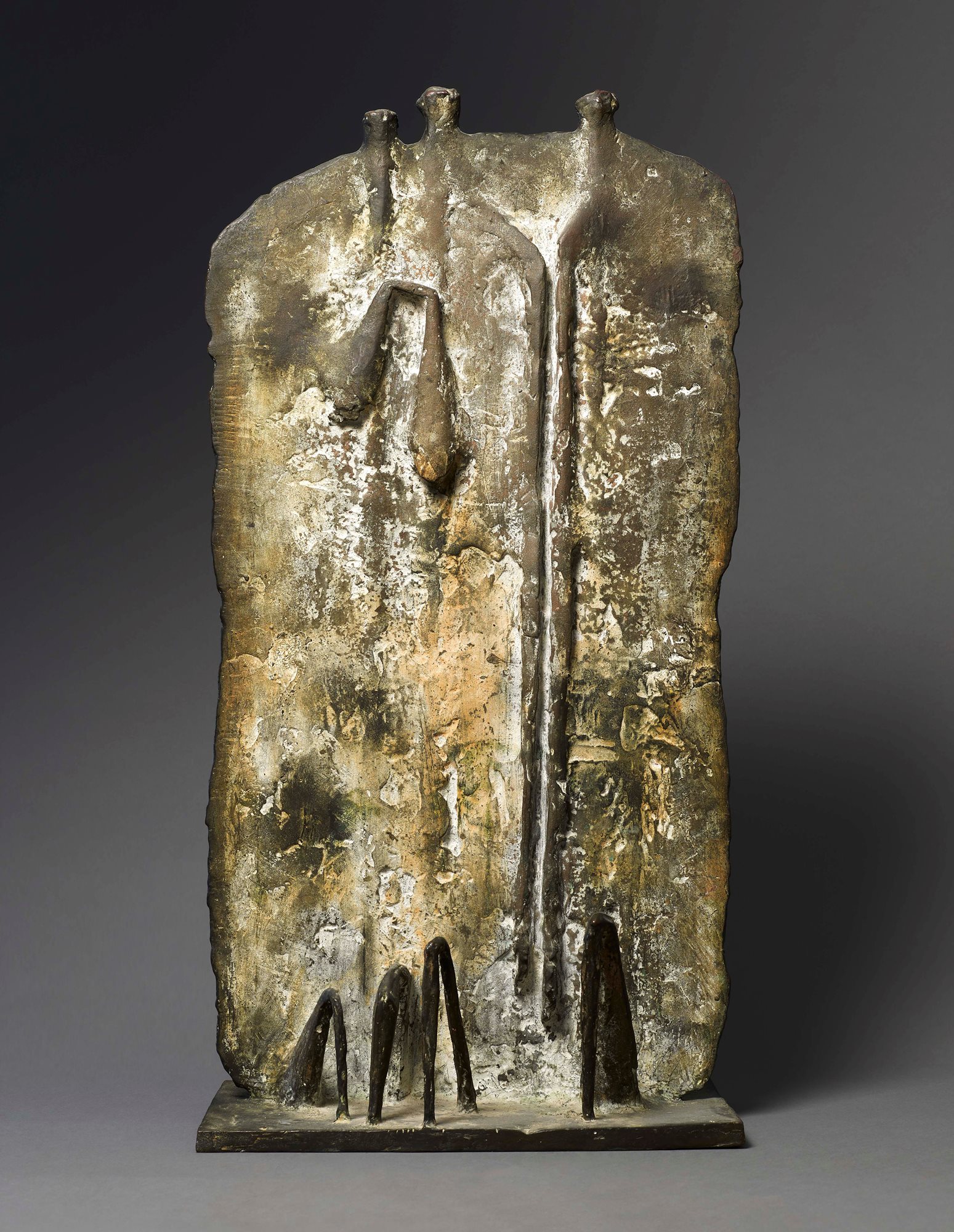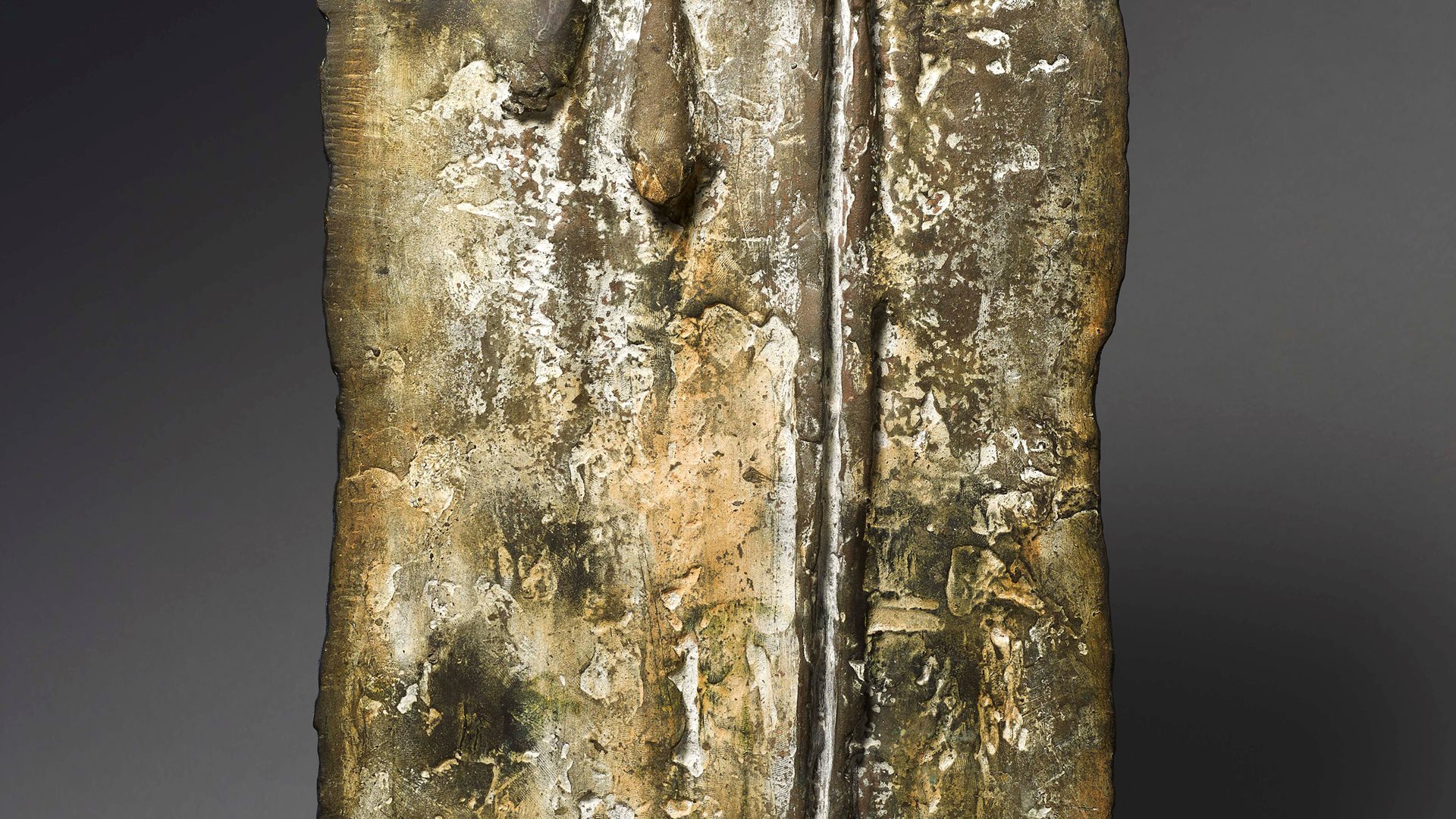

Exhibited:
London, Whitechapel Art Gallery, Kenneth Armitage, July-August 1959, n. 11, illustrated in the catalogue pl. VI (another cast)
Ontario, National Gallery of Canada, Recent British Sculpture, and touring to Auckland City Art Gallery and the State Galleries of Australia, British Council Tour, 1961-63, cat. n. 6 (another cast)
London, Whitechapel Art Gallery, Kenneth Armitage, July-August 1959, n. 11, illustrated in the catalogue pl. VI (another cast)
Ontario, National Gallery of Canada, Recent British Sculpture, and touring to Auckland City Art Gallery and the State Galleries of Australia, British Council Tour, 1961-63, cat. n. 6 (another cast)
Literature:
Roland Penrose, Kenneth Armitage: Artists of our time, Vol. vii, Bodensee-Verlag, Amriswil, Switzerland, 1960, pl. 8 (this cast)
Tamsyn Woollcombe (ed.) in association with the artist, Kenneth Armitage: Life and Work, Henry Moore Foundation in association with Lund Humphries, London, 1997, KA46
Roland Penrose, Kenneth Armitage: Artists of our time, Vol. vii, Bodensee-Verlag, Amriswil, Switzerland, 1960, pl. 8 (this cast)
Tamsyn Woollcombe (ed.) in association with the artist, Kenneth Armitage: Life and Work, Henry Moore Foundation in association with Lund Humphries, London, 1997, KA46
Seated Group is one of the earliest examples of a theme that was recurrent throughout Armitage’s oeuvre during the 1950s right up until the Venice Biennale of 1958 in which he partook and exhibited Diarchy (1957, Tate Britain). It explores his prepossession with the notion of projecting from a single, wall-like mass, the heads, breasts and limbs of a group of figures.
In 1971 Kenneth Armitage wrote in respect of this fascination: ‘I seem always to make walls (still do) from inclination. Why I don’t know—nor want to. It might have something to do with liking immensely Cycladic carvings as a student before the war. A wall contains, divides or conceals — it isn’t even a reality and I have often wanted to add things to an endless or continuous surface. The out-facing frontality just might have something to do with work during the war although I can’t be clear on this. Because it was found I was good at these things (to my surprise and even embarrassment) I was asked to form a War Office training centre in Tank and Aircraft identification and I knew by heart the shape and detail of every tank and aircraft in existence and much of this training we did with silhouettes in three elevations. After 6½ years in the army I shut off all memory of it on leaving but have sometimes wondered if certain images lingered on in spite of this —sometimes wings or flattened shapes, or the irregular oval of heads or bodies (side elevation of tank track important means of identification)—in no way consciously for one tends to absorb shapes and impressions and then later regurgitate them without knowing why (I had three screens in my first studio 23 years ago). This doesn’t explain anything really or why the wall must be square or rectangular, can have a zig-zag plan like a screen but must never curve. I just accept it as an inclination of which I never tire...’
Commenting on the device of integrating more than one figure into a single mass Armitage said: ‘An easily identifiable whole of utmost simplicity was what I normally needed ...’.
In 1971 Kenneth Armitage wrote in respect of this fascination: ‘I seem always to make walls (still do) from inclination. Why I don’t know—nor want to. It might have something to do with liking immensely Cycladic carvings as a student before the war. A wall contains, divides or conceals — it isn’t even a reality and I have often wanted to add things to an endless or continuous surface. The out-facing frontality just might have something to do with work during the war although I can’t be clear on this. Because it was found I was good at these things (to my surprise and even embarrassment) I was asked to form a War Office training centre in Tank and Aircraft identification and I knew by heart the shape and detail of every tank and aircraft in existence and much of this training we did with silhouettes in three elevations. After 6½ years in the army I shut off all memory of it on leaving but have sometimes wondered if certain images lingered on in spite of this —sometimes wings or flattened shapes, or the irregular oval of heads or bodies (side elevation of tank track important means of identification)—in no way consciously for one tends to absorb shapes and impressions and then later regurgitate them without knowing why (I had three screens in my first studio 23 years ago). This doesn’t explain anything really or why the wall must be square or rectangular, can have a zig-zag plan like a screen but must never curve. I just accept it as an inclination of which I never tire...’
Commenting on the device of integrating more than one figure into a single mass Armitage said: ‘An easily identifiable whole of utmost simplicity was what I normally needed ...’.